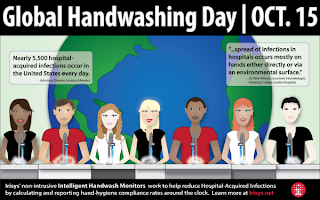School Sanitation and Hygiene
| Schools can provide an arena where sanitation can be shown at its best |
Schools provide excellent opportunities to support sanitation and hygiene promotion programs. The curriculum naturally offers opportunities to teach about dirt and disease and what can practically be done to improve health through better sanitation and hygiene. Construction and use of appropriate child friendly sanitary facilities (handwashing stations, soap and toilets) can be especially effective in reducing the incidence of diarrhea.
Schools may be better locations in which to enforce certain behaviors in children than the home. Schools can also provide an arena where sanitation can be shown at its best, and certain positive hygienic behaviors (hand washing with soap before eating and after going to the toilet) can become an engrained habit at a young age.

Nevertheless, hygiene promotion in school cannot rely solely on teaching and enforcing certain habits. Research has shown that children will more willingly change behavior if they are having fun and if they are following their peers. Imitation is one of the most successful forms of learning; hence young children will look to their older brothers and sisters or to older school friends to adopt new behaviors and life skills.
When developing and implementing school sanitation and hygiene programs several key issues need to be kept in mind:
1) School sanitation facilities: The main users of the facilities are children and designs need to be appropriate. This is particularly critical for young children around the age of 4 to 5 who are just starting to use the toilet and will be put off if toilets are too large, dirty or dark.
2) Getting the message right: Schools provide an arena within which to influence children’s behavior. Direct hygiene education may have limited effect in triggering behavior change; investigations focused on children’s behaviors, attitudes and interests are needed to develop the right hygiene promotion strategy.
3) Coordination: The Ministry of Education sets educational policy and regulates schools, while water and sanitation may be the responsibility of a different ministry. It is important to facilitate collaboration between these ministries, so that resources can be effectively directed at sound and consistent approaches.
4) Linking home with school: Schools are part of the larger community and must be supported by its members. A school water, sanitation and hygiene program will only be effective if it is reinforced and supported within the community, and the homes of the students. Hence, a school sanitation and hygiene program needs to be embedded within the context of a larger community water, sanitation and hygiene program if it is to re is ach its full potential.
Friskila Damaris Silitonga SKep. NS. MPH







Tidak ada komentar:
Posting Komentar